MARIANI’S
April 23, 2006
NEWSLETTER
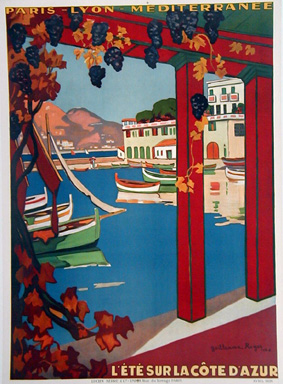
"L'Ètè
sur la Côte d'Azur" by Guillaume Roger, 1924
UPDATE: To
go to my web site, in which I will update food
&
travel information and help link readers to other first-rate travel
& food sites, click on: home page
ACCESS TO
ARCHIVE: Readers may now access
an
Archive of all past newsletters--each annotated--dating back to July,
2003, by simply clicking on www.johnmariani.com/archive
.
NEW
FEATURE! You may now subscribe anyone you wish
to this newsletter by
clicking here.
In
This Issue
NEW YORK CORNER : by John Mariani
QUICK BYTES
~~~~~~~~~~~~~~~~~~~~~~~~~~~~~~
For those of you who don't think of the
Robert and I think you'll enjoy this very personal look at our
--John Mariani
MOZZ IN WATER
by John Mariani
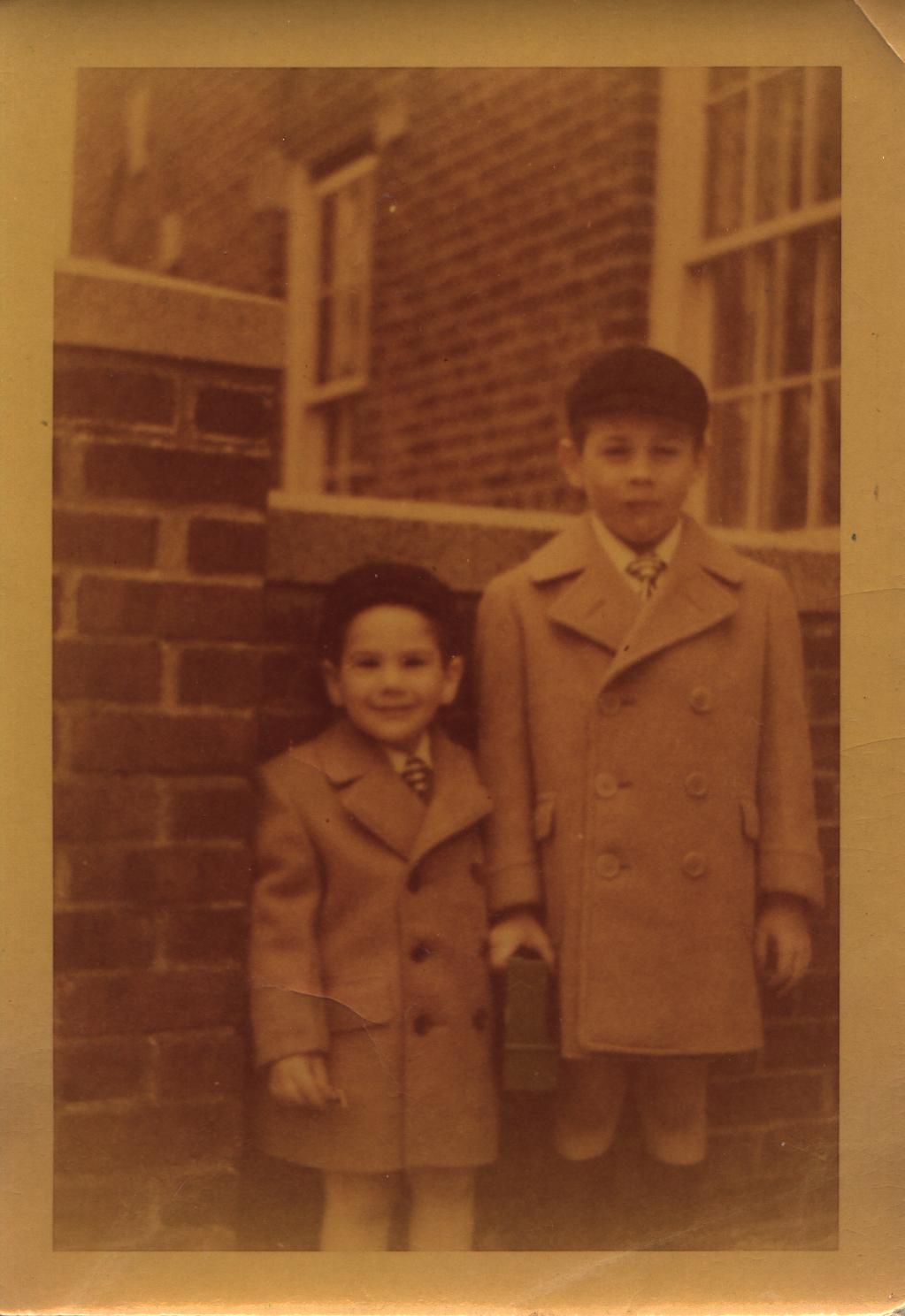 To be an
Italian in the Bronx
To be an
Italian in the BronxWe even had an Italian mayor--the first since LaGuardia----although Vincent "the Imp" Impelletteri was no more than a political hack better at attending clambakes than running the city. He was a Tammany appointee, after the former Tammany mayor, an Irishman named Bill O'Dwyer, took an appointment as Ambassador to Mexico rather than face corruption charges in New York. Anyway, the Imp was beaten badly in the next election by Bob Wagner.
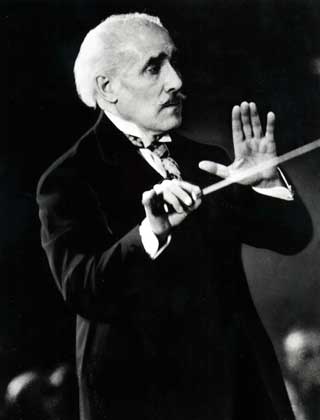
We had better, truer heroes to look up to, to emulate and to flaunt in the faces of people who thought we were just ditch diggers and spaghetti eaters. What of Arturo Toscanini, the impossibly demanding perfectionist whose work on television, starting in 1948, made him the most famous conductor in the world? He was a master interpreter of Debussy, Strauss, and Beethoven, and he had heroically refused to play under the Nazi and Fascist regimes in the 1930s, moving to New York where the NBC orchestra was created in 1937 just for him. People who had never seen a conductor in action, except in Hollywood movies, watched this intense little Italian with the white hair and mustache on television, and it was an image you'd never forget. He was short-sighted and couldn't read the score from the rostrum, so he'd memorize every note and conduct entirely from memory.
Toscanini was a particular hero in our house, not only for his supreme virtuosity but for the unalloyed passion and emotion he brought to the music of Italian and non-Italian composers alike. My father used to love to tell the story of how Toscanini, frustrated by a famous Wagnerian soprano who kept missing her cues, rushed to the music stand, grabbed her by her enormous bosoms, and screamed, "If these were only brains!"
My mother even bought my father a baton so that he could stand in the middle of our living room and conduct Puccini's "Turandot" or Beethoven's Third, imitating Toscanini's every thrust, calming the brass, bringing the violins to a feverish pitch, and holding the orchestra in his arms as he brought them through the finale.
Then there was Ezio Pinza, the handsome, patrician baritone who took Broadway audiences by storm with his performance in Rodgers and Hammerstein's "South Pacific" in 1950. My parents saw the show five times, and my father, who loved to be told he looked a bit like Pinza, would conduct the music at parties as his dentist friend Bill Verlin sang "Some Enchanted Evening" at the top of his lungs.
A younger, even more handsome Italian was Alfred Arnold Cocozza, a Philadelphia kid who took the stage named Mario Lanza and became a Hollywood tenor, even playing Caruso himself onscreen in 1951.
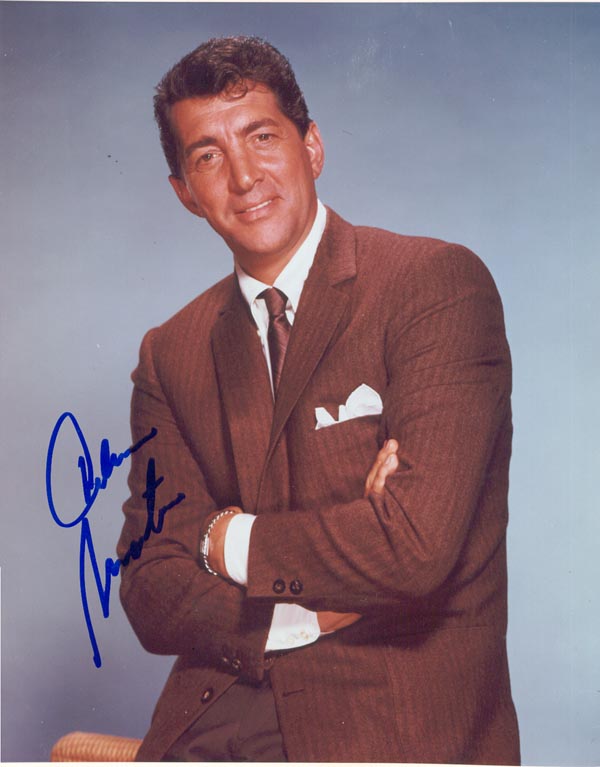 The Hit Parade was full of Italian
voices--Sinatra, Como, LaRosa, Damone, and a few who had Anglicized
their
names, like Bennett (born Tony
DeBenedetto) and Martin (Dino Martino). Julius
LaRosa had an enormous hit with an old Neapolitan
gimmick song
called "Eh Cumpari," sung in dialect and incomprehensible to just about
everyone. Tony Bennett's big hit "Rags to
Riches" became an Italian-American immigrant's anthem, and Dean
Martin's
"When the Moon Hits Your Eye Like a Big Pizza Pie, That's Amore" was
a joyous expressions of everything that was good and beautiful about
being an
Italian.
The Hit Parade was full of Italian
voices--Sinatra, Como, LaRosa, Damone, and a few who had Anglicized
their
names, like Bennett (born Tony
DeBenedetto) and Martin (Dino Martino). Julius
LaRosa had an enormous hit with an old Neapolitan
gimmick song
called "Eh Cumpari," sung in dialect and incomprehensible to just about
everyone. Tony Bennett's big hit "Rags to
Riches" became an Italian-American immigrant's anthem, and Dean
Martin's
"When the Moon Hits Your Eye Like a Big Pizza Pie, That's Amore" was
a joyous expressions of everything that was good and beautiful about
being an
Italian.With his perfectly cut black hair slicked back over his ears and curls tumbling down his forehead, his thick eyebrows and dark eyes, a nose like a Roman boxer's, his dark Sicilian complexion, full mouth and gleaming white teeth, Dean Martin played off the Jewish-American schlemiel comedy of his partner Jerry Lewis, and when Dean started to sing in a voice that was deep, husky, smooth, seductive and gay, American women in the 1950s went crazy, the way they had over Sinatra a decade before.
Other Italian singers milked "That's Amore" for its sentimentality and made it sappy. They exaggerated the Italian words, blubbered through the lyrics, swayed back and forth like gorillas, and played the dumb dago to the hilt.
But Dean Martin knew how to inflect the song with just enough lilt, throwing in a few extra vowels, playing with the song's lyrics but putting them over with exuberance and brio so that it made people listening to him wish they were Italian.
When the moon hits your eye like a big pizza pie,
That's amore.
When the stars make you drool just-a like pasta fazool,
That's amore.
'Scooza me, but you see,
Back in old Napoli, that's amore!
In the candy stores, factories and living rooms, the radios blared pop music--girl ballads like Jo Stafford's "You Belong to Me," Gogi Grant's "The Wayward Wind" and Patti Page's "The Tennessee Waltz." A cute Irish girl named Rosemary Clooney had major hits doing mock-Italian songs with names like "Botch-a-Me" and "Come On-a My House," whose lyrics held out the sweet, salacious promise of "figs and things" and . . . "everything."

Every Italian could sing and did sing, and street corners in the Bronx were stages for what later came to be called "do-wop" groups, trios and quartets whose intricate, wailing a cappella renditions of old standards and new music formed the basis of what was to become urban rock-and-roll.
Many of these groups became famous, and one of the most famous of them all came from the Belmont section of the Bronx, after which they took their name--Dion & The Belmonts. Their biggest hits drew on puberty's quivering plaints like "Why Must I Be a Teenager in Love?" The do-wop groups competed with each other for the sweetest sound, the most soulful lament and the most intricate scat line, like the Belmonts' dazzlingly baroque "Wop! Wop! Wop-bop-a-looma-a-wop-bang-bang" on "I Wonder Why."
There was always music in the air around Belmont, which was largely Neapolitan, isolated to this day from the blight that began to encroach on Fordham in the '50s. From the windows came the strains of old Neapolitan folk songs like "O sole mio!" and "Torna a Surriento" played on old phonographs and wooden radios. Most of these songs were unrelievedly melancholy, many of them expressing a despair at never seeing Naples again. Others were tied to great moments in Neapolitan history, like "Funiculi, Funicula," which commemorated the opening of a railway up the side of Mount Vesuvius.
All of these were known and sung by the vendors along Arthur Avenue, which, crisscrossed by 187th Street, formed the heart of Belmont. This was where all the food stores were--the pasta shops, the cheese shops, the pizzerias, meat and seafood markets, fruit and vegetable stands. Every vendor sang as he worked, plopping lemons into a paper bag to the waltz time of "Santa Lucia." Another would croon the lilting refrain of "Oj Mari" while slicing prosciutto on a machine--back and forth, back and forth, as he looked across the counter at a pretty girl. He would gently take a thin slice and place it daintily in her hand, shaking his head back and forth and singing, "Quanta suonno ca perdo per te"--"I have lost so much sleep over you."
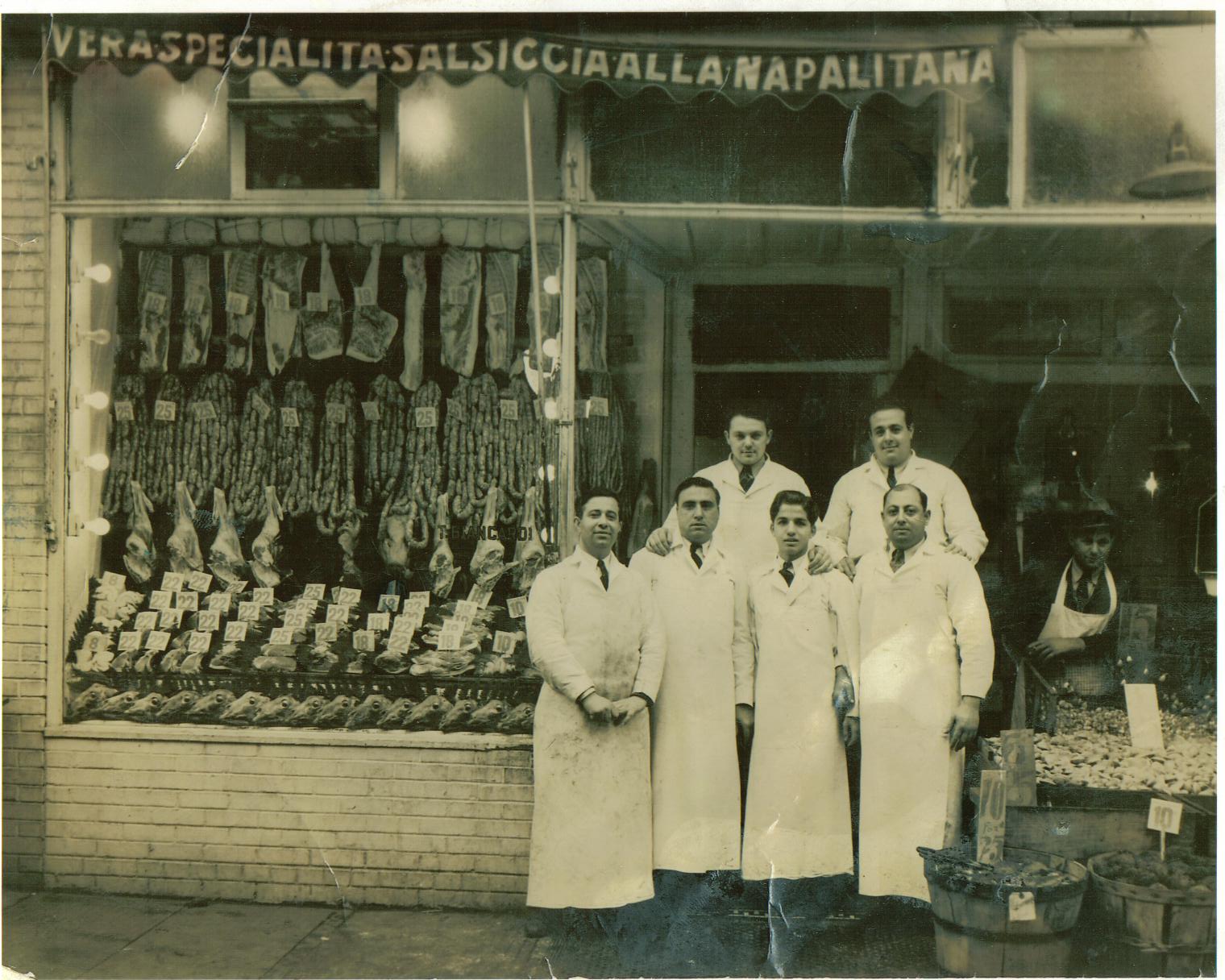 All along Arthur Avenue the air smelled
like
garlic and tomato, fresh basil, the aroma of pizza from Mario's, where
all the
Yankee came to eat, and the inebriating smell of
All along Arthur Avenue the air smelled
like
garlic and tomato, fresh basil, the aroma of pizza from Mario's, where
all the
Yankee came to eat, and the inebriating smell ofAlthough my family lived several miles from Arthur Avenue, my father would go there almost every Thursday afternoon, when he finished his office hours early.
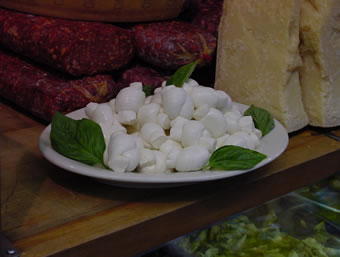 Last
stop was the cheese shop to buy a fresh mozzarella in water. Heavy, creamy and glistening, with the heft
and shape of a woman's breast, the mozz were kept in salted water to
keep them
fresh. Others called bocconcini
(left) were the size of ping pong balls and could be popped in
the mouth in one bite. My father would specify which one he wanted, and
the woman would
ladle
it out into a piece of waxed paper, then place it in a paper carton.
Last
stop was the cheese shop to buy a fresh mozzarella in water. Heavy, creamy and glistening, with the heft
and shape of a woman's breast, the mozz were kept in salted water to
keep them
fresh. Others called bocconcini
(left) were the size of ping pong balls and could be popped in
the mouth in one bite. My father would specify which one he wanted, and
the woman would
ladle
it out into a piece of waxed paper, then place it in a paper carton.By the time my father arrived home, I'd already had lunch. If it was during the school year, the bread, prosciutto and mozz would be my snack at three o'clock. But in summer, I waited for my father to arrive back at our apartment at around two o'clock, and I'd always ask, "Did you bring some mozz home?" and he'd kid around, scrunch up his face like he was going to say he'd forgotten, then bring out the bag from behind his back.
He'd take off his jacket and hat and lay them on the living room couch. Then he'd turn on the Victrola and put a 78 RPM record on the turntable. It would be Toscanini, conducting "Capriccio Italienne" or Carmen Cavallaro playing the Toselli Serenade on the piano. Carefully my father would then unwrap the mozz in water, and, with the same surgical precision and gentleness he used in treating his patients, he'd slice the bread thin enough to absorb the flavors of the meat and cheese but thick enough not to turn soggy. He'd unwrap the rosy, salty slices of prosciutto that had been laid out in impeccably neat layers between sheets of paper so that the slices didn't stick to one another. With a fork, he would then deftly curl back a single slice of prosciutto. The light would shine through it. He cut into the yellow-white mozz that oozed milk and beaded up. It was still a little warm when you bit into it, and the flavors were the same week after week.
My father would sit there in his shirt and tie, drinking a beer with his meal. I ate slowly, stretching out the time, and we talked about nothing in particular. But I always felt closer to him on those days than at any other time in my life. He would sit at the kitchen table, bite off a morsel of his sandwich, take a sip of beer, then close his eyes and raise his hand. "Listen," he said very softly, as Toscanini lulled the orchestra into a slow, sad movement. "That's very. . . very Italian."
RESTAURANT MAGAZINE ANNOUNCES WORLD'S 50 BEST RESTAURANTS
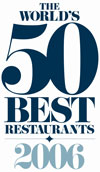 For the fifth year London-based Restaurant Magazine announced the results of
a poll of world food authorities (including the publisher of this
newsletter), restaurateurs, and chefs for the World's 50 Best
Restaurant Awards. The awards were presented at a ceremony on April 10
in London's Science Museum. This year the list was compiled in a
different way, with the world divided into 20 voting regions, each
headed by an appointed Chairperson who selected a voting panel of up to
31 individuals for their respective region. Those individuals then
voted for two restaurants in their own region and three
internationally. Collectively, the 20 regional Chairs form the "World's
50 Best Restaurants Academy," with 2,800 votes counted. For more
info, including the names and bios of the Academy judges, go to www.theworlds50best.com.
For the fifth year London-based Restaurant Magazine announced the results of
a poll of world food authorities (including the publisher of this
newsletter), restaurateurs, and chefs for the World's 50 Best
Restaurant Awards. The awards were presented at a ceremony on April 10
in London's Science Museum. This year the list was compiled in a
different way, with the world divided into 20 voting regions, each
headed by an appointed Chairperson who selected a voting panel of up to
31 individuals for their respective region. Those individuals then
voted for two restaurants in their own region and three
internationally. Collectively, the 20 regional Chairs form the "World's
50 Best Restaurants Academy," with 2,800 votes counted. For more
info, including the names and bios of the Academy judges, go to www.theworlds50best.com.The 50 restaurants selected are (with No. 1 getting the most votes):
1. El Bulli, Spain
2. The Fat Duck, UK
3. Pierre Gagnaire, France
4. The French Laundry, USA
5. Tetsuya, Australia
6. Michel Bras, France
7. Alain Ducasse, Louis XV, Monaco
8. Per Se, USA
9. Arzak, Spain
10. Mugaritz, Spain
11. El Raco de Can Fabes, Spain
12. Nobu, UK
13. Gambero Rosso, Italy
14. Gordon Ramsay, UK
15. Alain Ducasse Plaza Athenée, France
16. Jean-Georges, USA
17. Le Cinq, France
18. Daniel, USA
19. Oud Sluis, Holland
20. Chez Panisse, USA
21. El Cellar de Can Roca, Spain
22. Pascal Barbot-L'Astrance, France
23. Hof Van Cleve, Belgium
24. Troisgros, France
25. L'Atelier de Joël Robuchon, France
26. Charlie Trotter's, USA
27. Le Gavroche, UK
28. La Colombe, South Africa
29. Enoteca Pinchiorri, Italy
30. Rockpool, Australia
31. Le Calandre, Italy
32. Le Bernardin, USA
33. Noma, Denmark
34. Dieter Müller, Germany
35. St. John, UK
36. Kakkasan, UK
37. Martin Berasategui, Spain
38. Le Quartier, Souht Africa
39. Chez Dominique, Finland
40. L'Ambroisie, France
41. Schwarzwaldstübe, Germany
42. Dal Pescatore, Italy
43. Bocuse, France
44. Gramercy Tavern, USA
45. L'Arpège, France
46. Bukhara, India
47. De Marmeliet, Belgium
48. Oaxen, Sweden
49. Comme Chez Soi, Belgium
50. DOM, Brazil
NEW YORK CORNER
by John Mariani
75 Ninth Ave
212-989-6699
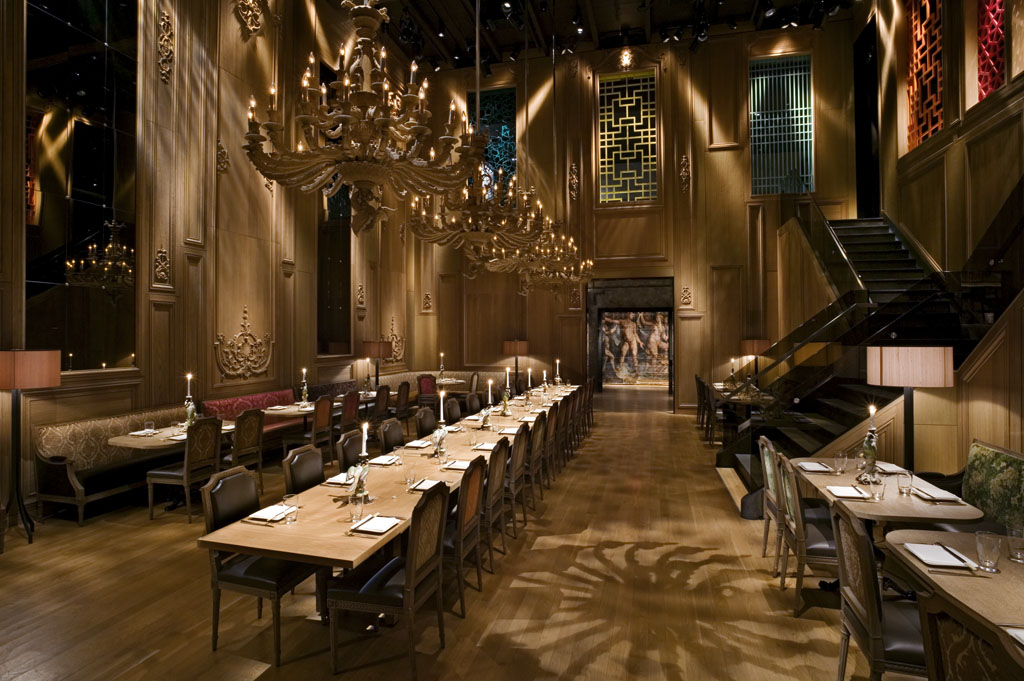 In pursuit of the hot
Asian gastro-extravanganza success of places like
Jean-Georges Vongerichten's Spice Market and the Japanese-founded Megu
(with two locations), restaurateurs are frantically opening gargantuan
showplaces in New York that seem better suited to Las Vegas. The
four year-old Ruby Foo, the year-old Ono, and the new Morimoto have now
been joined by Buddakan, offshoot of smaller Philadelphia original
opened in 1998. At 17,000 square feet and more than $10 million
in investment, Buddakan,
on the site of a former lumber company, is clearly aiming for the party
crowd, which, at the moment, it is getting in droves as the hot new
thing on this block in the Meat Market District, where you'll also find
Spice Market, Ono, and Morimoto.
In pursuit of the hot
Asian gastro-extravanganza success of places like
Jean-Georges Vongerichten's Spice Market and the Japanese-founded Megu
(with two locations), restaurateurs are frantically opening gargantuan
showplaces in New York that seem better suited to Las Vegas. The
four year-old Ruby Foo, the year-old Ono, and the new Morimoto have now
been joined by Buddakan, offshoot of smaller Philadelphia original
opened in 1998. At 17,000 square feet and more than $10 million
in investment, Buddakan,
on the site of a former lumber company, is clearly aiming for the party
crowd, which, at the moment, it is getting in droves as the hot new
thing on this block in the Meat Market District, where you'll also find
Spice Market, Ono, and Morimoto.Buddakan is the creation of restaurateur Stephen Starr (below, right), who is to Philadelphia what Jeffrey Chorodow is to Miami, Wolfgang Puck is to L.A., and Steve Hanson is to NYC--dynamic entrepreneurs who seem to have a canny sense of crowd control, putting as much effort into dazzling decor as into the cocktail menu and kitchen. The food is generally very tasty, fairly spicy, allows for sharing at the table, and goes well with drinks made with flavored vodkas and mango juice. Starr, whose 12 other restaurants are mostly thematic--Alma de Cuba (Cuban), The Continental ("global tapas"), El Vez (Mexican kitsch), Pod (Pan-Asian), Tangerine (Mediterranean)--along with the best steakhouse in Philly, Barclay Prime, and one of the finest seafood restaurants in America, Striped Bass. Indeed, it would be facile to say that substance at Starr's restaurants come second to style, although there is a great, great deal of the latter that tends to overwhelm the former.
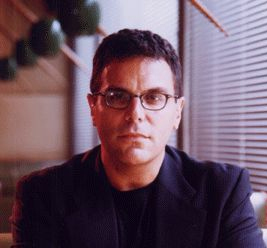
At Buddakan this is very much the case. How does a dedicated chef, in this case Michael Schulson (below), who spent nine months traveling throughout Asia, including stints at the Chang Mai Cooking School in Thailand and both Spago and the Four Seasons Hotel in Tokyo, compose a large menu of 10 dim sum, 5 cold appetizers, 6 hot, 7 meat, 8 seafood, 3 poultry, 2 tofu, 4 noodle, 5 rice, and 4 vegetable dishes and dole it out each night to 300+ seats and two huge bars? That's a lot of food to turn out each night with a consistency that does not become robotic, and with the numbers of parties and a central communal table, I suspect that ordering can become a nightmare.
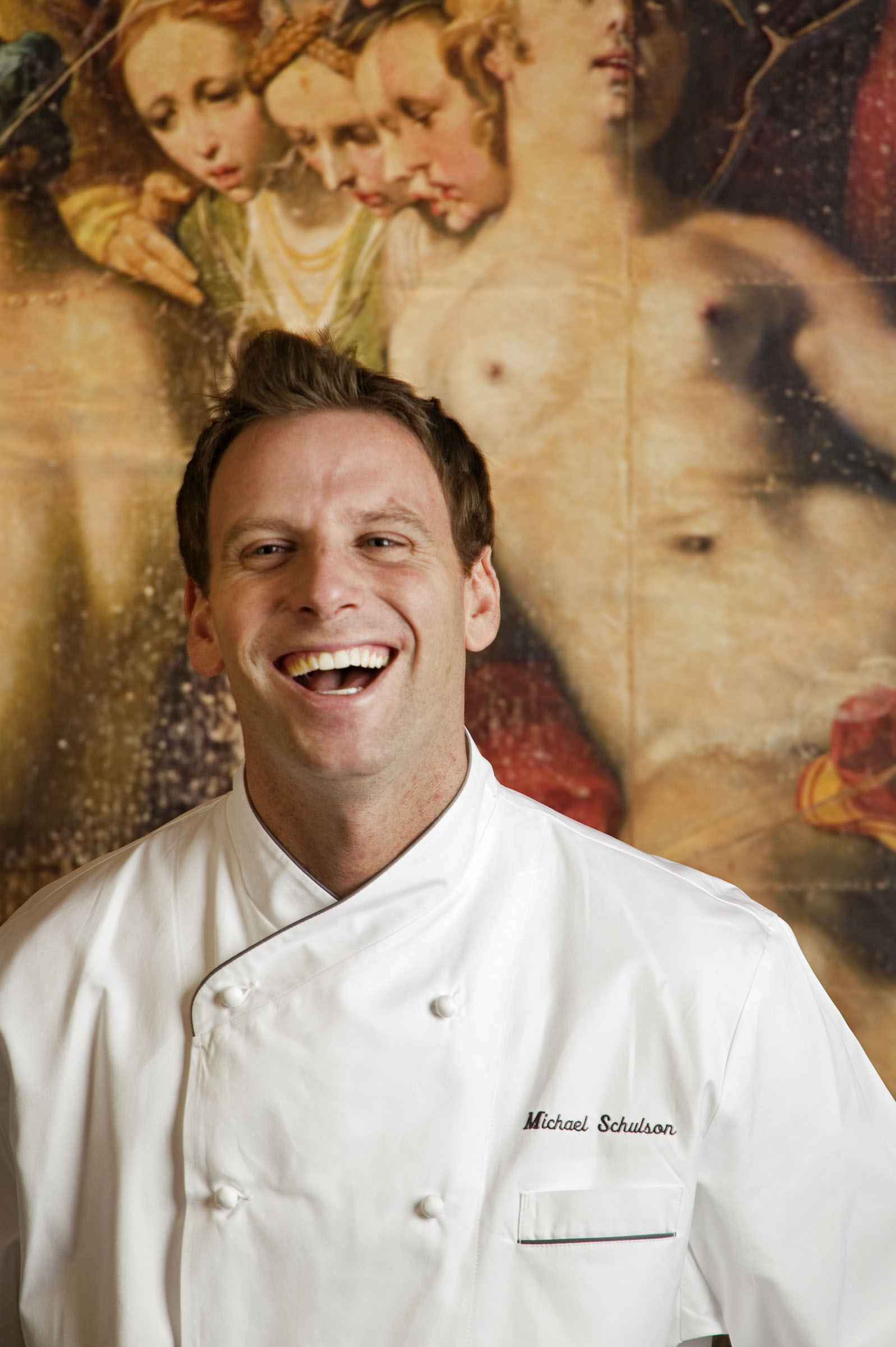 Nevertheless,
I found the staff extremely cordial, with none of that
wait-over-there-unless-you're-famous crap that goes on at places like
Spice Market, 66, and Tao (although a perusal of blog reports indicates
long wait times for reservations and food can be common.) And a very
attractive staff it is, from gorgeous hostesses whose well-turned legs
are kept in fine form by having to traipse up and down the huge
staircases that lead to the main dining--called The Great Room (above, left), which has the eerie
look of a Hollywood set for "Sinbad the Sailor Meets Oscar
Wilde." The anterooms, including one with a lighted wall of books
(below), are very dramatic,
shadowy, and a lot of fun. Needless to say, pounding music is
piped in throughout the evening, making conversation difficult amidst
the array of cocktails with names like Sin, Tranquility, Heat, and
Sacred.
Nevertheless,
I found the staff extremely cordial, with none of that
wait-over-there-unless-you're-famous crap that goes on at places like
Spice Market, 66, and Tao (although a perusal of blog reports indicates
long wait times for reservations and food can be common.) And a very
attractive staff it is, from gorgeous hostesses whose well-turned legs
are kept in fine form by having to traipse up and down the huge
staircases that lead to the main dining--called The Great Room (above, left), which has the eerie
look of a Hollywood set for "Sinbad the Sailor Meets Oscar
Wilde." The anterooms, including one with a lighted wall of books
(below), are very dramatic,
shadowy, and a lot of fun. Needless to say, pounding music is
piped in throughout the evening, making conversation difficult amidst
the array of cocktails with names like Sin, Tranquility, Heat, and
Sacred.The winelist is just large enough to make sense, since such spicy food doesn't exactly go very well with high-priced Bordeaux, with a fair number of bottles under $50. But wines like Twomey Merlot '02 at $140 and Bien Nacido Syrah '02 at $91 tip the scales into exorbitance.
The menu, similar but not the same as in Philly, is, obviously, mix-and-match, and you'll probably wonder what you're missing by not ordering one or the other item. With dim sum running $9-$12 and appetizers $11-$13, choose carefully, because portions are not large. Our party of four enjoyed the shrimp dumplings with bamboo shoots, and the Cantonese spring rolls with chicken and shrimp and more bamboo shoots. Lobster dumplings didn't gain much from a soy truffle vinegar, and a tuna spring roll with shallots and mayonnaise came to the table cold, not room temperature, which robbed it of flavor. Deviled tuna tartare with chopped egg and sriracha mayonnaise was as good as many around town (and there are many), but the tastiest starter was chili rock shrimp with crispy ginger.
The best main course--again, not huge in proportion--was steamed red snapper with lily bulb and black mushrooms, and for lighter tastes the Cantonese steamed sole with ginger and scallion oil is pleasingly delicate. Shrimp and lobster chow fun with that always-mysterious "X.O sauce" was good, as were braised veal cheeks with green apple and aromatic jasmine rice. Minced pork lo mein with pickled cucumbers and Thai chili was nothing to get excited about, when better renditions are available not far away in Chinatown.
And that's the dilemma for true Asian foodies: Do you head for Chinatown and ferret out the arcane specialties in a none-too-savory storefront that happens to serve some great dishes at rock-bottom prices, or do you revel at the decor and flash of Buddakan and pay a high price for creditable, if not stunning, pan-Asian food? Clearly the former is more exciting food-wise but Buddakan does a finer job entertaining all the senses, and the desserts, which are not all that Asian, are a lot better than in Chinatown. Buddakan is fun, it's sexy, and the food has its modest delights.
Appetizers run $9-$13, main courses $17-$47. Buddakan is open daily and the bars are open very late.
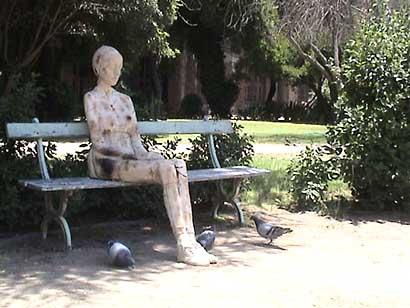
Artist Constanza Puente made a six-foot self portrait statue of a woman made out of bread and displayed it on the grounds of the Catholic U. Extension Center in Santiago, Chile. It has proven extremely popular with birds who have been eating it. Puente explained the statue showed “the fragility of human beings.”
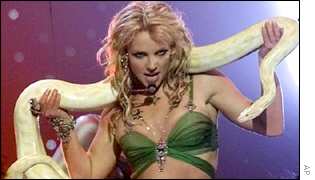 ALSO BANNED: BIRD FLU,
SEMI-AUTOMATIC RIFLES, AND BRITNEY SPEARS' LAST CD
ALSO BANNED: BIRD FLU,
SEMI-AUTOMATIC RIFLES, AND BRITNEY SPEARS' LAST CD"When I flew out of Western Australia, I picked up at the airport a list of all the things I could not bring back into this fragile, deeply rugged country. `Electric flyswats' said the notice, `blowpipes, knuckle-dusters, nunchakus and cobras.' The shrinking violet, I thought, will never be the state flower of any part of Australia."--Pico Iyer in "The Emptiest Part of Emptiness," in the Financial Times (Feb. 11, 2006).
"THE SWEET LIFE" CRUISE
 This fall, from Sept. 29-Oct. 6 John Mariani (left),
publisher of Mariani's Virtual
Gourmet and food & travel columnist for Esquire Magazine, will host
and lead a 7-day cruise called "The Sweet Life," aboard
Silverseas' Millennium Class Silver
Whisper,
with days visiting Barcelona, Tunis, Naples, Milazzo (Sicily), Rome,
Livorno, and Villefranche. There will be a welcoming cocktail
party,
gourmet dinners with wines, cooking demos by John and Galina Mariani
co-authors of The Italian-American
Cookbook),
This fall, from Sept. 29-Oct. 6 John Mariani (left),
publisher of Mariani's Virtual
Gourmet and food & travel columnist for Esquire Magazine, will host
and lead a 7-day cruise called "The Sweet Life," aboard
Silverseas' Millennium Class Silver
Whisper,
with days visiting Barcelona, Tunis, Naples, Milazzo (Sicily), Rome,
Livorno, and Villefranche. There will be a welcoming cocktail
party,
gourmet dinners with wines, cooking demos by John and Galina Mariani
co-authors of The Italian-American
Cookbook),  optional shore excursions will include a
tour of the Amalfi Coast,
dinner at the great Don Alfonso 1890 (2 Michelin stars), a private tour
of the Vatican, dinner at La Pergola (3 Michelin stars) in Rome, a
Night Cruise to Hotel de Paris and dinner at Louis XV (3 Michelin
stars)
in Monaco, and much more. Rates (a 20% savings) range from $4,411
to
$5,771.For complete information click.
optional shore excursions will include a
tour of the Amalfi Coast,
dinner at the great Don Alfonso 1890 (2 Michelin stars), a private tour
of the Vatican, dinner at La Pergola (3 Michelin stars) in Rome, a
Night Cruise to Hotel de Paris and dinner at Louis XV (3 Michelin
stars)
in Monaco, and much more. Rates (a 20% savings) range from $4,411
to
$5,771.For complete information click.QUICK BYTES
* On
* On May 12 the 7th Annual Merlot in May® at Sterling Vineyards® in Napa Valley will be held at host winery, with
~~~~~~~~~~~~~~~~~~~~~~~~~~~~~~~~~~~~~~~~~~~~~~~~~~~~~~~~~~~~~~~~~~~~~~~~~
MARIANI'S VIRTUAL GOURMET NEWSLETTER is published weekly. Editor/Publisher:
John Mariani. Contributing Writers: Robert Mariani, Naomi
Kooker, Kirsten Skogerson, Edward Brivio, Mort
Hochstein, Suzanne Wright. Contributing
Photographers: Galina Stepanoff-Dargery, Bobby Pirillo. Technical
Advisor: Gerry McLoughlin.
Any of John Mariani's books below
may be ordered from amazon.com by clicking on the cover image.
 |
 |
 |
 |
 |
 |
copyright John Mariani 2006